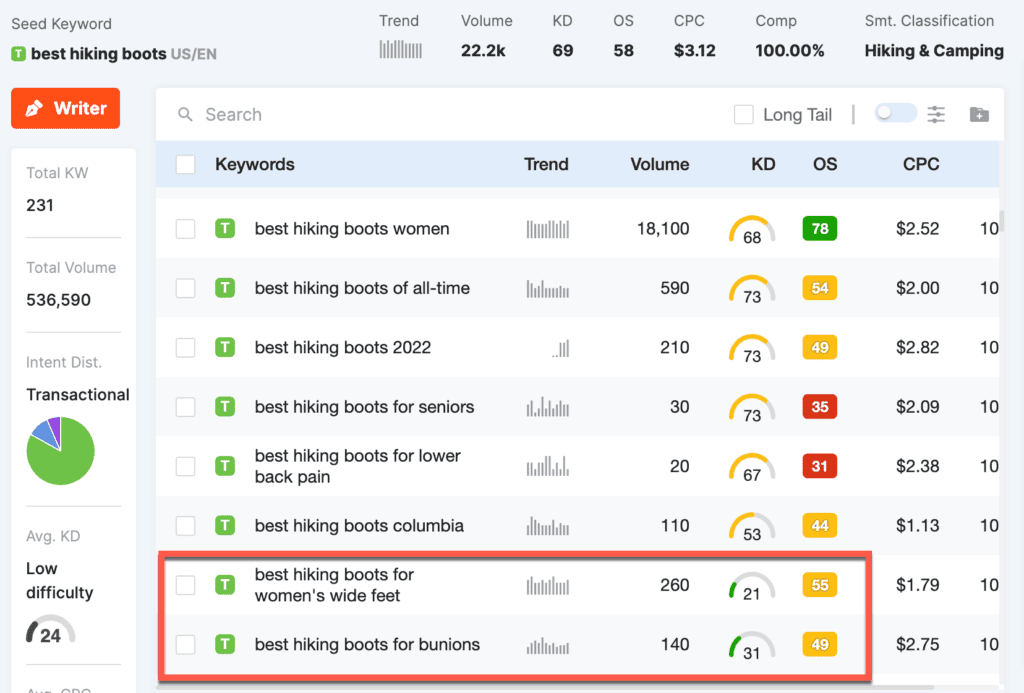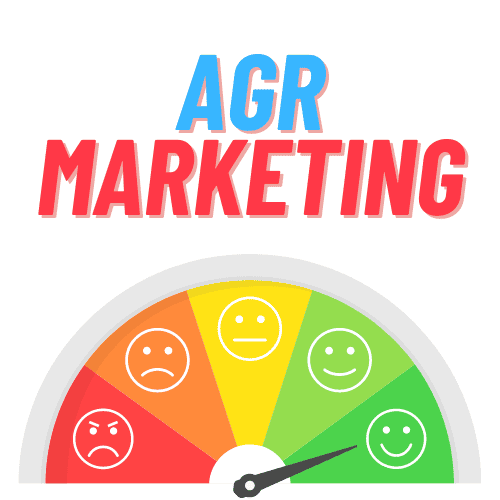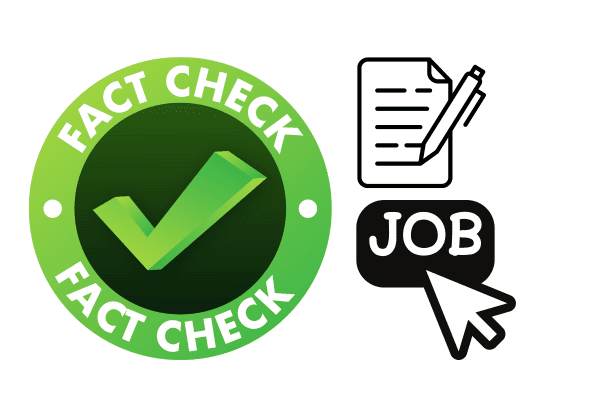21 Most Efficient Methods – Find Low Hanging Fruit Keywords
Uncover Hidden Gems: Low Hanging Fruit Keywords for SEO Success
Are you tired of struggling to rank for highly competitive keywords in organic search traffic? Looking for a way to boost your website’s visibility without breaking the bank with Google AdWords?
Well, look no further! How to find low hanging fruit keywords. Improve your website’s visibility by optimizing your on-page SEO and targeting the correct search queries.
21 Most Efficient Methods – Find Low Hanging Fruit Keywords
The world of SEO is constantly evolving, and with the advent of 2023, new strategies have emerged to help businesses and content creators gain a competitive edge. Low hanging fruit keywords – terms that have decent search volume but relatively low competition – can offer a fast track to improved rankings and traffic.
Here are the 21 most efficient methods for finding these golden opportunities in 2023:
- Use Google’s “Searches Related to”: At the bottom of search results; Google provides related search terms. Often, these are variations that have lower competition.
- Long-Tail Keyword Research: Focus on longer, more specific keywords. They might have lower search volumes but usually face less competition.
- Google Keyword Planner: While primarily for PPC, this tool can give insights into keywords that many SEO-specific tools might overlook.
- Google Trends: Identify emerging topics before they become highly competitive.
- LSI Graph: Discover Latent Semantic Indexing (LSI) keywords related to your primary term.
- Competitor Analysis: Tools like SEMrush or Ahrefs can help you see what low-competition keywords your competitors rank for.
- Forum and Discussion Boards: Platforms like Quora or industry-specific forums can highlight the real questions people are asking, leading to potential keyword opportunities.
- People Also Ask Boxes: These Google SERP features can unveil related questions and terms.
- Google Analytics: Dive into organic search traffic to identify keywords bringing in traffic with minimal effort.
- Ubersuggest: This tool offers a range of keyword ideas, including those with low competition.
- Local Keywords: Using region-specific keywords can reduce competition for businesses serving a local audience.
- Use Voice Search Queries: With the rise of voice-activated assistants, optimizing for conversational queries can be a goldmine.
- Seasonal Keywords: Target keywords relevant to specific times of the year, e.g., “summer hiking boots.”
- Check Google Search Console: Identify keywords your site already ranks for and optimize further for quick wins.
- Use AnswerThePublic: This tool visualizes questions people are asking around a specific keyword.
- YouTube Suggest: Similar to Google’s suggestion feature but for YouTube, which can be especially valuable if you’re considering video content.
- Dive into Social Media Chatter: Platforms like Twitter or LinkedIn can give insights into current discussions in your industry.
- Collaborate with Your Sales Team: They interact directly with customers and might have insights into your audience’s exact queries and problems.
- Optimize for Mobile Search: With more searches being conducted on mobile, think about keywords people might specifically use on these devices.
- Focus on User Intent: Instead of targeting high-volume keywords, consider the intent behind searches to find opportunities.
- Question-Based Keywords: Tools like QuestionDB can help you find popular questions around your topic, which can be easier to rank for.
So, what exactly are low hanging fruit keywords in the context of Google AdWords and on-page SEO? These are the hidden gems of the digital realm – terms that have decent search volume but face less competition.
Think of them as ripe fruits waiting to be plucked from the tree. By targeting these low hanging keywords, you can gain an edge over your competitors and drive more organic traffic to your site, ultimately improving your chances of appearing in featured snippets on relevant topics.
The benefits of focusing on low hanging fruit keywords in Google AdWords are immense. Not only do they offer quicker wins in terms of page SEO ranking and traffic, but they also provide valuable insights into user intent.
By understanding what people are searching for when using these specific terms, you can tailor your content to meet their needs precisely and increase impressions.
Now, let’s discuss why keyword research is crucial for SEO success. With millions of websites vying for attention online, it’s essential to identify relevant keywords for your content.
Keyword research helps you uncover trends, discover untapped niches, and optimize your website for Google AdWords. Conducting thorough keyword research ensures your articles are optimized to rank higher in search engine results and attract more organic traffic.
In this blog post series, we’ll take you through a step-by-step process to find those elusive low hanging keywords for your AdWords campaigns. We’ve covered you, from leveraging keyword research tools to analyzing competitor strategies.
So buckle up and prepare to supercharge your SEO efforts with these juicy fruit keywords that will help you rank higher in the SERP features!

Stay tuned for our next installment, where we delve deeper into the first step: conducting effective keyword research. It’s time to leave behind traditional approaches and embrace a new era where finding long-tail, competition, and different keywords becomes second nature.
Let’s get started!
Importance of Low Hangings Fruit Keywords for SEO
Higher Chances of Ranking on Search Engine Results Pages (SERPs)
Finding low hanging fruit keywords is crucial for improving your website’s visibility on search engine results pages (SERPs) and marketing your work effectively. These keywords are essential for optimizing your website’s ranking and increasing the chances of potential visitors discovering your website through a targeted query.
By strategically incorporating these keywords into your content, you can enhance your article’s visibility and attract more traffic to your website.

When you optimize your content around low hanging keywords in your marketing article, search engines recognize the relevance and value you provide to users.
This can result in improved rankings and higher organic traffic. By focusing on these less competitive keywords in your query, you can outperform your competitors who may be targeting broader or more competitive terms. The title of your article plays a crucial role in attracting the right audience, and optimizing it with relevant keywords is essential for success.
For example, let’s say you have a blog about healthy recipes. Instead of trying to rank for a highly competitive keyword like “healthy recipes,” which will require significant time and effort, you could target a specific long tail keyword like “quick and easy vegetarian dinner ideas.”
This targeted approach allows you to attract a specific audience interested in quick vegetarian dinner options, increasing the likelihood of ranking higher in SERPs and driving more organic search traffic to your blog.
By focusing on different keywords that align with specific search queries, you can optimize your content for better visibility and reach.
Increased Organic Traffic and Potential Conversions
Targeting low-hanging keywords in your marketing can increase organic traffic to your website.
When users search for specific terms in a query that aligns with your content, they are likelier to click on your link if it appears prominently on the page in the search results. As a result, you’ll see a boost in organic traffic as more people visit your site.
Moreover, attracting visitors explicitly searching for what you offer through targeted keywords in your marketing increases the chances of converting them into customers or subscribers.
Since these users already have an intent related to your content or products, they are more likely to engage with your website and take desired actions, such as purchasing or signing up for a newsletter.

Consider this scenario: you run an online store selling handmade jewelry. Instead of solely focusing on highly competitive search queries like “handmade jewelry,” you could target a low-hanging keyword like “unique beaded bracelets for women.” Doing so attracts users looking for unique beaded bracelets, increasing the likelihood of driving qualified traffic and potential conversions. This targeted marketing strategy can be enhanced by utilizing search analytics and analyzing search query data.
Cost-Effective Strategy Compared to Targeting Highly Competitive Keywords
Targeting low hanging fruit keywords in marketing can be a cost-effective strategy for increasing organic search traffic. Compared to highly competitive keywords, which often require significant time, effort, and potentially expensive SEO tactics to rank well, they have less competition.
This makes achieving favorable rankings and attracting search queries easier and more affordable.
By focusing on these less competitive search queries, you can allocate your resources effectively and maximize your return on investment (ROI) in marketing. This strategy is particularly beneficial for small businesses or individuals with limited budgets who want to improve their website’s visibility without breaking the bank.
Utilizing search analytics can help identify the most effective search query to target.

For instance, if you have a local bakery and want to attract more customers from your area, targeting long tail keywords like “best cupcakes in [your city]” can be more cost-effective than trying to rank for a broader term like “cupcakes.”
By narrowing down your focus and catering to local customers searching for the best cupcakes in their specific location, you can increase your chances of ranking higher without spending excessive amounts on marketing efforts.
Opportunity to Establish Authority in Niche Markets
Targeting low hanging keywords in your article allows you to establish authority within niche markets. These specific search queries often represent smaller segments of more prominent industries or topics.
By consistently creating high-quality content optimized around these niche-specific terms, you position yourself as an expert in that field, leveraging search analytics.
When users query niche topics and find your content frequently appearing in the search results, they associate your brand with expertise and reliability. This helps build trust and credibility among your target audience, leading to increased brand recognition and loyalty.
These positive outcomes can be achieved through practical keyword optimization efforts and targeting low hanging keywords with low keyword difficulty.

For example, suppose you have a blog focused on sustainable living. Instead of competing with larger websites targeting broad search queries like “sustainability,” you could target low-hanging fruit keywords such as “zero waste bathroom products” or “eco-friendly kitchen gadgets.”
By consistently providing valuable content around these niche topics, you can establish yourself as a go-to resource for individuals interested in sustainable living within specific areas of their lives.
How to Identify Low-Hanging Fruit Keywords
Understanding User Intent and Search Behavior
Understanding the intent behind user searches and their search behavior is crucial. By getting into the minds of your target audience, you can identify the query keywords that are more likely to bring in qualified traffic.

One way to uncover user intent is by analyzing people’s questions about your industry or niche. Look for everyday queries on forums, social media platforms, and Q&A websites like Quora.
This will give you insights into the specific problems or needs your potential customers are trying to address, which can inform your keyword optimization efforts.
Additionally, assessing the keyword difficulty of these search queries can help you identify low-hanging keywords with a higher chance of ranking.
Pay attention to low hanging keywords and search trends. Are there any recurring themes or topics that people frequently query? Identifying these trends can help you discover keyword opportunities that align with current demand.
This article will go over how to find and utilize these keywords effectively.
Conducting Thorough Keyword Research Using Various Tools and Techniques
It involves using tools and techniques to identify relevant terms that you need to rank well in search engine results. You can create a keyword sheet with rows of high-potential keywords.
Start by brainstorming a list of core keywords related to your business or website. These broad terms define what you offer, such as “pet supplies” or “dog accessories.” These keywords will help optimize your website for search queries and improve its visibility in search engine results.

Once you have your core keywords, use keyword research tools like Google Keyword Planner, SEMrush, Ahrefs, and SurgeGraph to expand your list.
These tools provide valuable data on search volume, competition levels, and related keyword suggestions. These tools are essential for gathering data on the keywords you need for your article.
Pay attention to high-volume keywords in your article, those with moderate search volume, and lower competition levels. These go-to keywords are often common that can deliver targeted traffic without as much effort.
Analyzing Long-Tail Keyword Opportunities with Lower Competition Levels
As mentioned in this article, long-tail keywords are longer, more specific phrases with lower competition than broader terms. They often represent highly targeted search queries and can be excellent common-hanging fruit keywords to target.
When optimizing your website, you must include these keywords in your content to increase the chances of ranking higher.
By doing so, you’ll be able to attract more organic traffic and improve the visibility of your website. So, if you’re wondering where to start, look at your keyword research sheet and identify those long-tail keywords that can help your website go above the competition.
Consider your target audience’s needs or pain points to identify long-tail keyword opportunities. Consider the questions they might ask when searching for solutions related to your industry.
For instance, if you offer home renovation services, potential long-tail keywords in your article could include “how to remodel a small bathroom” or “cost-effective kitchen renovation ideas.” Go ahead and incorporate these keywords to optimize your content for search engines.
Use keyword research tools to explore variations and combinations of your core keywords with additional descriptive terms in this article. Look for long-tail keywords with decent search volume but are not overly competitive to go.
These hidden gems can help you attract qualified leads with less competition from other websites.
Tools and Techniques for Finding Low Hanging Fruit Keywords
Google Keyword Planner: Unleashing the Power of Suggestions and Search Volume Data
One tool that stands out from the crowd is the mighty Google Keyword Planner. This nifty tool provides valuable low hanging keyword suggestions and presents search volume data that can guide your keyword research efforts. The article on this tool can be found here.
Using Surgegraph Research and article writing software, I researched below as an example. I found “Low Hanging Fruit Keywords “best hiking boots for women’s wide feet” and “best hiking boots for bunions.”

With Google Keyword Planner, you can dive into a sea of keyword ideas related to your niche or topic. Enter a seed keyword or phrase, and let this powerful tool work magic by generating an extensive list of relevant search queries users seek.
But wait, there’s more! The natural beauty of Google Keyword Planner lies in its ability to provide search volume data. This article offers insights into how often users search these keywords on Google. Analyzing this data lets you identify decent search volumes but relatively lower competition.
To make the most of Google Keyword Planner, consider using long-tail variations of your primary keyword as seed keywords. Long-tail keywords are longer and more specific phrases with lower search volumes but higher conversion potential.
These gems often represent opportunities that can help drive targeted traffic to your website. This article provides tips on optimizing your keyword research using Google Keyword Planner.
Exploring Related Searches on Google SERPs: Digging Deeper for Hidden Gems
In the quest, don’t overlook the power of exploring related searches on Google Search Results Pages (SERPs). When you search on Google, scroll down to the bottom of the page, where you’ll find a section titled “Searches related to [your query].” This section provides additional keyword ideas closely related to your initial search term.
By clicking on these related searches, you open up a treasure trove of potential low hanging fruit keywords. These suggestions come straight from Google and reflect what users frequently search for about your primary keyword.
Please take note of any relevant keywords that catch your eye and add them to your list.
Remember often possess lower competition and can help you gain a competitive edge in the search results. So, don’t be afraid to dig deeper into the related searches section on Google SERPs. You might stumble upon some hidden gems that others have overlooked.
Leveraging Third-Party Tools: Unleash the Power of Specialized Keyword Research
In addition to Google’s tools, several third-party tools can supercharge your research efforts. These tools offer advanced features and functionalities explicitly designed for keyword analysis, giving you an edge in uncovering valuable keywords with less competition.
One such tool for SEO is SEMrush. This all-in-one platform allows you to go beyond basic keyword research. With SEMrush, you can explore new keyword opportunities, analyze competitor strategies, and track rankings.
It’s vast database, and powerful analytics help you identify that align with your content strategy and go beyond the basics.
Another popular option is Ahrefs. Known for its robust backlink analysis features, Ahrefs also offers a powerful keyword explorer tool. It lets you discover thousands of relevant keyword ideas and evaluate their search volumes, difficulty scores, and potential traffic value.
By leveraging Ahrefs’ extensive data set, you can pinpoint those elusive keywords with immense potential for your website’s growth.
Moz Keyword Explorer is a powerful tool for keyword research. With its user-friendly interface and comprehensive metrics like organic click-through rates (CTR) and priority scores, Moz Keyword Explorer helps you find untapped that can drive targeted traffic to your site.
Use Moz Keyword Explorer to go beyond traditional keyword research and uncover valuable insights.
Utilizing these third-party tools alongside Google’s offerings gives you a well-rounded arsenal for finding. Remember to combine the data and insights from these tools with your industry knowledge and intuition to uncover the most valuable search queries and opportunities.
Analyzing Competitor Keyword Strategies
Competitor analysis is a crucial step in any keyword research process. By analyzing your competitors’ strategies, you can gain valuable insights into their top-ranking keywords and identify untapped opportunities for your content.
Identifying competitors’ top-ranking keywords through competitor analysis tools
One effective way to uncover this is by identifying your competitors’ top-ranking search queries. Several competitor analysis tools, such as SEMrush’s Keyword Explorer, provide valuable data on the search queries driving traffic to your competitors’ websites.
To start, enter the URL of a competitor’s website into the tool and let it do its magic. It will generate a list of keywords the website ranks for in search engine results pages (SERPs).
Look for relevant keywords with high search volumes and low competition levels. These are often great opportunities you can target with your content.
Evaluating competitor content gaps and identifying untapped opportunities
Another fruitful approach is to assess your competitors’ content gaps and prioritize keyword optimization efforts. This involves identifying low hanging keywords or subtopics related to your niche that your competitors have not covered extensively.
By targeting these keywords with your content, you can attract organic traffic from search engines and improve your keyword difficulty. Also, secure an API key to access valuable keyword research and analysis.
To identify low hanging keywords and content gaps, carefully examine the topics covered by your competitors and look for areas where they may lack comprehensive information or fail to address specific user queries.
You can use keyword research tools like SEMrush or Google’s Search Console to gather insights about popular search queries related to your niche.
Once you have identified these content gaps, create informative and engaging articles targeting those specific topics. By providing valuable information that others have missed, you increase the chances of ranking higher in search results and attracting more organic traffic.
Additionally, implement keyword optimization efforts to enhance your visibility further. Consider focusing on low-hanging keywords with less competition and lower keyword difficulty. To access accurate keyword data, be sure to obtain an API key.
Monitoring competitor backlink profiles for potential keyword ideas
Backlinks play a significant role in search engine rankings, and analyzing your competitors’ backlink profiles can help you discover possible keyword ideas. By examining the websites that link to your competitors, you can gain insights into the keywords they use as anchor text.
Use tools like SEMrush or Moz to analyze your competitors’ backlink profiles and identify popular search queries. Look for patterns in the anchor texts these websites use, as they can indicate the relevance and popularity of specific keywords within your niche.
Once you have identified these potential keyword ideas, incorporate them into your content strategy. Create high-quality articles or blog posts that target these keywords while providing valuable information to your audience.
By leveraging the power of backlinks and optimizing your content around relevant keywords, you can improve your chances of ranking higher in search results.
Leveraging Low-Hanging Fruit Keywords for Improved SEO
Incorporating strategically within the website content
Incorporating low-hanging fruit keywords strategically within your website content is crucial. These keywords have relatively low competition and high search volume, making them easier to rank for and attract organic search traffic.
Conduct thorough keyword research using tools like Google Keyword Planner or SEMrush. Look for long-tail keywords that are relevant to your business or industry. Long-tail keywords typically consist of three or more words and are more specific, targeting users further along in their buying journey.
Once you have identified these, it’s essential to integrate them into your website content seamlessly. This includes optimizing meta tags, headings, and image alt text with the relevant keywords.
Meta tags provide information about your webpage to search engines and should naturally contain the targeted keyword within the title tag and meta description.
Ensure you incorporate these keywords naturally within your headings (H1-H6) throughout the page. However, avoid overstuffing them as it can negatively impact user experience and lead to penalties from search engines.
Furthermore, don’t forget about optimizing image alt text with relevant keywords. Alt text helps search engines understand what an image is about and provides an opportunity to include target keywords where appropriate.
This improves SEO efforts and accessibility by providing alternative text descriptions for visually impaired users.
Enhancing user experience by aligning content with targeted keywords
In addition to strategically incorporating within your website content, aligning your content with these targeted search queries is essential to enhance user experience. When users find precisely what they’re looking for on your website, they are more likely to stay longer, engage with your content, and potentially convert into customers.
Start by creating high-quality, informative content that addresses your identified search intent. This means understanding what users look for when entering those keywords into Google Search.
By providing relevant and valuable information, you increase the chances of ranking higher in search engine results pages (SERPs) and attracting organic traffic.
Consider structuring your content in a way that answers common questions or solves specific problems related to your target search queries. Use subheadings to break up the text and make it easier for readers to navigate our content.
Incorporate bullet lists or numbered lists to provide clear steps, instructions, or options for search queries.
Remember that user experience goes beyond just the written content. Ensure your website is mobile-friendly, loads quickly, and has an intuitive navigation structure. A positive user experience encourages visitors to spend more time on your site and increases the likelihood of them exploring other pages or taking desired actions.
Optimizing your website for search queries and finding low-hanging keywords can help improve your keyword difficulty. Don’t forget to secure your API key to access essential data.
Utilizing Google Search Console for keyword insights
To further optimize your SEO efforts and gain valuable insights into how well your low hanging fruit keywords perform, consider utilizing Google Search Console. This free tool provided by Google allows you to monitor your website’s presence in Google Search results.
It provides data on impressions, clicks, click-through rates (CTRs), and average positions for specific keywords.
By analyzing this data within Google Search Console, you can identify which drives organic traffic to your site and adjust your SEO strategy accordingly. Look for opportunities where you may be ranked more bass than expected but still receive significant impressions or clicks.
These could be potential areas for improvement by optimizing existing content or creating new content targeting those keywords.
Pay attention to any SERP features that appear alongside your website listing in search results, such as featured snippets, knowledge panels, or image carousels. Optimizing your content specifically for these low hanging keywords can help increase visibility and attract more organic traffic from users who prefer these enhanced search result formats.
Additionally, it’s essential to consider the keyword difficulty when optimizing your content for these SERP features.
Optimizing Content with Low-Hangings Fruit Keywords
Creating high-quality, informative content around low hanging fruit keywords
One effective strategy is to focus. These keywords have relatively low competition but still offer much search volume. By targeting these keywords, you can increase your chances of ranking on the first page of search engine results and drive more organic traffic to your website.
Creating high-quality and informative articles or blog posts is essential to optimize your content. Conduct thorough keyword research to identify relevant keywords that align with your topic. Look for keyword opportunities with medium to high search volume but low competition.
Once you have identified your target, incorporate them naturally throughout your content. This includes using specific keywords in headings, subheadings, and within the body of your text.
However, be careful not to overdo it, as keyword stuffing can negatively impact your SEO efforts. Instead, aim for a balanced use of relevant keywords that enhances the readability and flow of your article.
Ensuring proper keyword placement throughout the content
Proper keyword placement is crucial when optimizing your content for search engines. Consider strategically placing them in critical areas such as meta tags and headings to maximize the impact.
Meta tags are HTML elements that provide information about a webpage to search engines. They include meta titles and descriptions in search engine results pages (SERPs). Incorporating relevance into these meta tags can help improve visibility and click-through rates.
Include the target in at least one heading or subheading within your article. Headings break up the text for better readability and signal to search engines what each section is about. You provide context and relevance to your content by including specific keywords in these headings.
Using variations of low hanging fruit keywords naturally within the text
While targeting specific low-hanging fruit keywords is essential, don’t forget to incorporate variations naturally within the text. This helps search engines understand the breadth of your content and can increase your chances of ranking for related queries.
For example, if your main keyword is “keyword optimization efforts,” consider using variations such as “optimizing keywords” or “efforts in keyword optimization” throughout your article. By doing so, you diversify the language used and cater to different search intents from users.
Using a mix of exact variations ensures that your content remains relevant and comprehensive. It also helps prevent repetitive use of the same keyword, which can be off-putting to readers.
Incorporating Long-Tail Keywords in SEO Strategy
Understanding the Benefits of Long-Tail Keywords in Capturing Specific Audience Segments
Long-tail keywords are a crucial component of any effective SEO strategy. Unlike generic short keywords, long-tail keywords are longer and more specific phrases that target niche audience segments.
Incorporating these keywords into your content lets you capture users’ attention by searching for something particular.
The benefits of using long-tail keywords are numerous. Firstly, they have lower competition and broader search terms, making ranking higher in search engine results pages (SERPs) easier.
This means that targeting long-tail keywords gives you a better chance of driving organic traffic to your website.
Secondly, long-tail keywords help you reach a highly targeted audience. When users enter detailed search queries, it indicates they already have a clear idea of what they’re looking for.
By optimizing your content with relevant long-tail keywords, you can attract visitors who are more likely to convert into customers or take desired actions on your website.
To identify suitable long-tail keywords for your SEO strategy, there are several tools available that can streamline the research process. AnswerThePublic and KeywordTool.io are two popular options worth exploring.
These tools provide insights into the questions and phrases people commonly use when searching for information related to their industry or niche.
Conducting Long-Tail Keyword Research Using Tools like AnswerThePublic or KeywordTool.io
AnswerThePublic is an excellent tool for generating ideas around long-tail keyword phrases. It aggregates data from various search engines and presents it visually appealingly.
Enter a seed keyword related to your business or topic, and AnswerThePublic will display low-hanging keywords, questions, and related queries that people frequently search for.
KeywordTool.io is a valuable resource for conducting long-tail keyword research. It extensively lists low hanging keywords and suggests long-tail variations based on your seed keyword.
This tool also offers insights into search volume, competition level, and cost-per-click (CPC) data, which can further inform your low-hanging keyword selection.
When using these tools, identify long-tail keywords that align with your target audience’s search intent. Consider the specific problems or needs they might have and craft keywords that address those pain points.
Doing so allows you to create content that resonates with your audience and drives targeted organic traffic to your website.
Optimizing Website Pages and Blog Posts with Long-Tail Keywords for Better Visibility
Once you have identified relevant long-tail keywords through research, optimize your website pages and blog posts accordingly. Here are some critical steps to follow:
- Include long-tail keywords in page titles: Incorporate the chosen long-tail keyword naturally within the title of your page or blog post. This helps search engines understand the content and improves visibility in SERPs.
- Integrate keywords into headings: Use long-tail keywords in subheadings (H2, H3 tags) throughout your content. This helps with SEO and enhances readability by breaking up the text and making it easier for users to scan.
- Sprinkle keywords throughout the content: Include long-tail keywords organically within the body of your content. Aim for a natural distribution without overstuffing or sacrificing readability.
- Optimize meta descriptions: Craft compelling meta descriptions incorporating relevant long-tail keywords while accurately summarizing the page’s content. Meta descriptions don’t directly impact rankings but can influence click-through rates from search results.
- Create high-quality content: While optimizing for long-tail keywords is essential, ensure that your overall content provides value to readers. Focus on creating informative, engaging, well-structured pieces that satisfy user intent.
By following these optimization practices, you increase your website or blog post ranking higher in search results for specific long-tail keywords. This can increase visibility, targeted organic traffic, and better conversions.
Tracking Performance and Adjusting Keyword Strategy
Monitoring keyword rankings using tools like Google Search Console or Rank Tracker
Keeping track of your keyword rankings is essential to understanding how well your website performs in search engine results. Using tools like Google Search Console or Rank Tracker, you can gain valuable insights into the position of your keywords and their fluctuations over time.
Google Search Console provides a wealth of information about your website’s performance in organic search. It allows you to see which keywords drive traffic to your site and how they rank. By regularly monitoring this data, you can identify those already performing well and capitalize on their success.
Rank Tracker is another helpful tool that tracks the rankings of specific keywords across multiple search engines. This can be particularly helpful if you want to gauge how well your website performs compared to your competitors.
When analyzing keyword rankings, it’s essential to focus not only on the position but also on the trends. Are specific keywords consistently improving their ranking? Are there any sudden drops that need attention?
By identifying these patterns, you can make informed decisions about which keywords are worth targeting further.
Analyzing organic traffic and conversion rates
While keyword rankings provide valuable insights, they don’t tell the whole story. Analyzing the organic traffic and conversion rates associated with the you have identified is equally essential.
Organic traffic refers to the number of visitors who reach your website through unpaid search results. You can determine where your efforts should be focused by examining which drives the most organic traffic.
If specific keywords consistently bring in high volumes of relevant traffic, it may be worth investing more resources into optimizing for those terms.
Conversely, conversion rates measure how successful your website is at turning visitors into customers or achieving other desired actions (such as signing up for a newsletter or downloading a resource).
By analyzing the conversion rates associated with specific, you can identify which keywords drive traffic and generate valuable leads or sales.
You can comprehensively understand your performance by combining data on organic traffic and conversion rates. This information will help you prioritize your efforts and allocate resources to the most effective keywords.
Making data-driven adjustments to keyword targeting based on performance metrics
Once you have monitored low hanging keyword rankings and analyzed organic traffic and conversion rates, it’s time to make data-driven adjustments to your low hanging keyword targeting strategy.
This involves using the insights from performance metrics to refine your approach and maximize results with common-hanging keywords.
Start by identifying any underperforming not delivering the desired results. These may be keywords with low rankings, minimal organic traffic, or poor conversion rates. Consider whether these keywords are worth pursuing further or if they should be replaced with more promising alternatives.
Next, look for opportunities to optimize further high-performing. Are there additional or long-tail variations of these keywords that could be targeted? Can you create new content specifically tailored to these terms?
Expanding your keyword targeting within prosperous areas can increase your chances of capturing more relevant search traffic.
It’s important to remember that keyword targeting is an ongoing process. As search trends evolve and user behavior changes, so should your low-hanging keywords strategy. Regularly monitor performance metrics and adjust your approach to stay ahead of the low-hanging keyword competition.
Case Studies: Success Stories
Real-life examples of businesses achieving SEO success
Let’s dive into some real-life examples demonstrating how companies have achieved SEO success by targeting. These success stories will show you the power of identifying and leveraging these keywords to drive organic traffic growth.
One example is a small online boutique that specializes in handmade jewelry. They conducted thorough keyword research using tools like Google Keyword Planner and SEMrush to identify low-competition, high-search volume keywords relevant to their niche.
By optimizing their website content and product descriptions for these targeted keywords, they could rank higher in search results and attract more organic traffic.
Another example is a local bakery looking to increase its online visibility. They used Google Search Console to analyze their website performance and discovered several with solid potential.
By incorporating these keywords strategically into their website’s meta tags, headings, and content, they experienced a significant boost in search rankings and saw an uptick in website visitors.
Demonstrating the impact of targeted keyword optimization on organic traffic growth
These case studies highlight the direct impact of targeted keyword optimization on organic traffic growth. By focusing, businesses can tap into untapped opportunities that competitors often overlook.
This approach allows them to quickly gain visibility in search results and attract highly relevant users actively searching for products or services related to their business.
In one instance, a startup offering personalized fitness programs wanted to improve its online presence without breaking the bank on expensive advertising campaigns. Through diligent keyword research, they identified specific long-tail keywords with lower competition but still had a substantial number of monthly searches.
By creating high-quality blog posts centered around these long-tail keywords, they established themselves as an authority in the fitness industry and steadily increased their organic traffic over time.
Highlighting specific strategies to identify and leverage keywords
Businesses employ strategies tailored to their specific goals and target audience to identify and leverage successfully. Here are some practical approaches that have yielded positive results:
- User-generated content: Encouraging customers to leave reviews or testimonials can provide valuable insights into their language and phrases when searching for products or services. These authentic user-generated keywords can be incorporated into website content to attract similar customers.
- Competitor analysis: Analyzing competitors’ websites can uncover potential low hanging fruit keywords they may have missed. Businesses can capitalize on those opportunities by identifying gaps in their keyword targeting and gaining an edge in organic search rankings.
- Long-tail keyword research: Long-tail keywords often represent low hanging fruit opportunities due to their specificity and lower competition. Conducting thorough research using keyword tools allows businesses to discover long-tail variations of popular search terms that can be targeted for improved visibility.
- Answering customer questions: Identifying common questions related to a business’s industry or niche provides an opportunity to create targeted content that directly addresses these queries. Companies can attract users actively seeking answers or solutions.
Unleashing the Power for SEO Success
In today’s competitive online landscape, uncovering every advantage possible to improve your website’s search engine optimization (SEO) is crucial. One effective strategy that can yield significant results is leveraging low hanging fruit keywords.
These keywords are relatively easier to rank for and can bring targeted traffic to your website.
Importance for SEO
Low-hanging fruit keywords play a vital role in enhancing your SEO efforts. By targeting these keywords, you have a higher chance of ranking on the first search engine results pages (SERPs) and attracting relevant visitors to your site.
Unlike highly competitive keywords, they offer an opportunity to quickly gain visibility and drive organic traffic without extensive resources or time investment.
How to Identify Low-Hanging Fruit Keywords
Identifying requires a strategic approach. Conduct thorough keyword research using tools like Google Keyword Planner, Moz Keyword Explorer, or SEMrush. Look for long-tail keywords with moderate search volume and lower competition levels.
These are often indicative of potential low hanging fruit opportunities.
Tools and Techniques
Several tools and techniques can aid in finding. Utilize keyword research tools, along with Google Trends and AnswerThePublic.com, to identify popular topics related to your niche. Explore forums, social media platforms, and Q&A websites where people discuss relevant issues within your industry.
Analyzing Competitor Keyword Strategies
Analyzing competitor keyword strategies is an excellent way to uncover potential low hanging fruit opportunities. Use tools like SEMrush or Ahrefs to analyze competitor websites’ organic rankings and identify specific keywords they are ranking well for but have lower competition levels.
Understanding what works for your competitors allows you to adapt and refine your keyword strategy.
Leveraging for Improved SEO
Once you have identified them, it is crucial to incorporate them strategically into your website’s content. Create high-quality, informative articles, blog posts, or landing pages around these keywords.
Aim to provide valuable information and answer relevant questions to attract and engage your target audience effectively.
Optimizing Content
To optimize your content, ensure they are naturally integrated within the headings, subheadings, meta tags, and throughout the body of your content. However, avoid overstuffing keywords, which can negatively impact user experience and SEO rankings.
Focus on creating valuable content that resonates with search engines and human readers.
Incorporating Long-Tail Keywords in SEO Strategy
Long-tail keywords often align with low hanging fruit opportunities due to their specificity and lower competition levels. Incorporate long-tail keywords into your SEO strategy by creating dedicated content targeting these phrases.
By catering to specific search queries, you increase the likelihood of attracting highly relevant traffic to your website.
Tracking Performance and Adjusting Keyword Strategy
Continuously monitor the performance of your low hanging fruit keyword-focused content using tools like Google Analytics or Search Console. Track metrics such as organic traffic, bounce rate, time on page, and conversion rates to assess the effectiveness of your keyword strategy.
Make necessary adjustments based on data insights to further optimize your SEO efforts.
Case Studies: Success Stories
Numerous success stories demonstrate the power of leveraging for improved SEO performance. For instance, Company X increased its organic traffic by 50% within three months by targeting specific long-tail keywords related to their niche market.
These case studies highlight the potential benefits achievable when implementing a strategic approach towards low hanging fruit keyword optimization.
In conclusion, incorporating it into your SEO strategy can significantly enhance your website’s visibility and attract targeted traffic. You can unlock the potential for improved search engine rankings and drive business growth.
FAQs
Q: How long does it take to see results from targeting low hanging fruit keywords?
A: The timeline for seeing results when targeting low-hanging fruit keywords can vary depending on factors such as competition levels, the quality of your content, and search engine algorithm updates.
However, with a well-executed strategy, you may start noticing improvements in organic traffic within a few weeks or months.
Q: Can I target multiple low hanging fruit keywords in a single piece of content?
A: Targeting multiple low-hanging fruit keywords in a single piece of content is possible. However, ensure that including these keywords feels natural and does not compromise your content’s quality or readability.
Focus on providing valuable information that aligns with each keyword’s intent.
Q: Are low hanging fruit keywords only relevant for small businesses?
A: No, low hanging fruit keywords are relevant for businesses of all sizes. While small businesses can benefit from quickly gaining visibility and attracting targeted traffic without extensive resources, larger organizations can also leverage these opportunities to expand their reach within specific niches or subcategories.
Q: Should I prioritize low hanging fruit keywords over highly competitive ones?
A: It is recommended to balance targeting both low hanging fruit keywords and highly competitive ones. Low-hanging fruit keywords offer quicker wins and targeted traffic, while highly competitive ones have higher search volumes but require more time and effort to rank for.
A comprehensive keyword strategy should include both types based on your specific goals.
Resources
We’re reader-supported. We may earn an affiliate commission when you buy through links on our site.

Angus Robertson is an authority in online marketing, affiliate marketing, and Search Engine Optimization (SEO). With an innate passion for the digital world, he has spent the last two decades assisting businesses in amplifying their online presence and boosting profitability.






